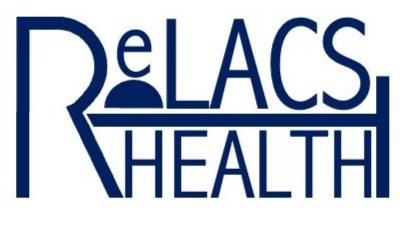Is Tramadol for Restless Legs Syndrome Treatment a Wolf in Sheep’s Clothing?: A ReLACSing Blog #25
Most restless legs syndrome (RLS) experts would argue that opioid treatment for restless legs syndrome (RLS) is like a sheep in wolf’s clothing, but in some ways, the commonly prescribed painkiller tramadol may actually be a wolf in sheep’s clothing when it comes to the long-term treatment of RLS. This blog explores why this medication with opioid properties may backfire as an alternative to true opioids when it comes to RLS.
Opioids, which fall into the category of pain medications known as narcotics, are perhaps the oldest treatment for RLS dating back to the days of Sir Thomas Willis himself in the 17th century. Sir Thomas Willis was the English physician after whom we have named the alternative medical diagnosis for RLS, Willis-Ekbom Disease, as he is thought to have first described and treated the condition. Sir Thomas Willis used a medicine from the opium plant to treat a noblewoman who had fits of leg movements and disrupted sleep consistent with RLS. A few centuries later, research has shown that patients with RLS have defects in the opioid pathways of the brain, which could be why opioids are so powerful in the treatment of RLS, which is a condition involving unpleasant sensations that are distinct from pain sensations, with the exception of those who have a painful variation of RLS.
Opioid pharmaceutical drugs have been used for several decades now as an important treatment for moderate to severe RLS and are considered a second-line medication option now after alpha-2-delta ligands (drugs like gabapentin or pregabalin [Lyrica®]) including in the most recent 2021 guidelines published by the RLS Foundation. Low doses of long-acting opioids like methadone have been the treatment of choice, with the largest clinical trial being on long-acting oxycodone in Europe several years ago. More recently, several RLS experts including yours truly have been moving toward buprenorphine (Suboxone®, Belbuca®, Butrans®, etc.) because of the numerous benefits of this unique partial-opioid agonist, particularly the lack of effect on breathing even at high doses. This makes it unlikely that a person would die from taking too much of this drug, as would be the case for an opioid like fentanyl. The drug has other benefits including lack of euphoria (i.e. getting high) from the medication and a reduced level of regulation by the DEA (Schedule III instead of Schedule II like most opioids). In fact, two collaborators at the Cleveland Clinic and I have had an abstract accepted to the Associated Professional Sleep Societies’ (APSS) Sleep 2023 Conference in June. This study tracks 55 patients who received buprenorphine for severe RLS for up to two years, and the results are very promising for persons struggling with RLS, particularly for those who have greater risks from taking full agonist opioids like methadone, oxycodone, or hydrocodone (e.g. Norco®).
Unfortunately, as I have detailed in a blog a few months ago, due to the opioid epidemic, there is a tremendous backlash against opioids in general in the medical field, now to the detriment of those needing them for RLS and other legitimate uses for conditions that lead to pain. I have argued that dopamine agonists should no longer be used for RLS with rare exception due to the inevitable augmentation, or severe worsening of the condition, from the long-term effects of the drug on the dopamine system of the brain, along which could come impulse control problems, depression, chemical dependence, and other behavioral changes. Many physicians have become so anti-opioid that some say they will never prescribe opioids under any circumstances. These are the same doctors that may ignore the long-term consequences of dopamine agonists just to avoid having to prescribe opioids. The evidence, at least for RLS, supports the long-term effectiveness and safety of opioids including this ten year review of methadone by Johns Hopkins clinicians and now multiple studies by my colleague Dr. John Winkelman at Mass General who has been tracking a large group of RLS patients on opioids in the National RLS Opioid Registry with this and this publication coming out recently. Dr. Winkelman’s publications continue to support that opioids may actually be a sheep in wolf’s clothing, more bark than bite.
This sets the stage for the role of tramadol in the treatment of RLS as a (sort-of) opioid alternative. Tramadol is different from standard opioid medications in that it has some effects on the opioid system, but it also has significant effects on increasing serotonin and norepinephrine in the brain to help with reducing pain. This review article summarizes this well. For those who feel like they have heard of serotonin and norepinephrine, there is a class of antidepressants called serotonin and norepinephrine reuptake inhibitors (SNRIs) that are commonly used to treat depression. Many of you have people you know taking these including venlafaxine (Effexor®) and duloxetine (Cymbalta®) as two examples. Not to wander too deep in the sheep’s meadow on the biology, but basically these are two chemicals that brain cells use to communicate with each other. When they do their work in the brain, they are shepherded into certain brain cells and are broken down, or put to pasture, if you will. These drugs, as inhibitors, prevent them from being taken up and degraded, increasing the amount of them floating around to create their effect.
This class of antidepressants is also frequently used in the treatment of chronic pain, particularly nerve pain. Venlafaxine can be used in the prevention of migraines. Duloxetine can ease fibromyalgia symptoms. These work differently than the earlier mentioned alpha-2-delta nerve-pain medications like gabapentin and distinctly from opioid medications. By working on two distinct pathways in the body, tramadol can be highly effective in relieving pain. In RLS, however, this second serotonin and norepinephrine pathway, and perhaps some of the lesser-known side mechanisms of how tramadol works can produce long-term problems in those with RLS that pure opioids do not. Those who know RLS have heard that nearly all antidepressants with the exception of bupropion (Wellbutrin®) can worsen symptoms of RLS. This definitely includes the aforementioned SNRIs.
Tramadol has been a commonly prescribed medication, not only because of its effectiveness for pain conditions, but also because of the feeling that it has a lower risk of abuse/addiction compared to standard opioids. The DEA has it regulated at Schedule IV, more regulated than the alpha-2-delta ligands but less than opioids. With the medical field generally wanting to avoid opioids, tramadol, in theory, is an option to harness opioid properties without as many risks. This may only be somewhat true as more than a quarter century of use has shown some of the same issues as with the opioids themselves. The above review paper has a half-dozen studies cited that demonstrate addiction and abuse popping up with tramadol as well. This randomized trial of tramadol in recreational drug users shows that tramadol has some of the same chemical responses as other recreational drugs.
For RLS, open-label studies like this and clinician experience show that tramadol can be effective if used daily for the prevention of RLS symptoms. However, many have now observed a worsening of RLS with long-term use, often similar to augmentation caused by dopamine agonists with increase in symptoms, earlier onset of symptoms during the day, spread of restlessness to other parts of the body, etc. This was one of the case reports sounding the concern with Dr. Christopher Earley of Johns Hopkins reporting nine individuals with augmentation-like symptoms as well. In about eight years of practicing sleep medicine with an RLS-predominant clinical panel, I have seen tramadol worsen RLS in at least 10 patients of mine. I have had to take all of these patients off tramadol for their condition to improve, just like what has to be done with augmentation from dopamine agonists.
If classic augmentation is caused by the brain’s adaptation to the drug effects of dopamine agonists with chronic use, then how can tramadol cause augmentation? Does tramadol actually have dopamine effects that are lesser known? This study of rats does in fact show an effect on the D2 and D3 dopamine pathways, which are also significantly involved in RLS. Perhaps it is not related to dopamine directly, but the SNRI effects in a similar fashion to antidepressants. If one takes tramadol for months or years, then maybe the serotonin and norepinephrine effects in brain antagonize the RLS system more than the opioid effects of tramadol relieve symptoms, causing a gradual worsening of the condition, but maybe in a different way than classic dopamine drugs.
With the reports from other RLS experts and my own personal experience, I am concerned about tramadol if taken daily for RLS and do not prescribe it. My feeling is that for isolated situations such as the good ol’ RLS torture chamber, aka the plane flight seated in coach class, or a passenger in a long car ride, a theatre show, or a spectator in the cramped basketball arena seating, then a dose of tramadol as a preventative may not be the worst idea. However, if more powerful treatment is needed for RLS on a daily basis, it is better to turn to true opioids themselves rather than try to cut corners with tramadol. If you want opioid properties but a lower risk of abuse and respiratory depression, use buprenorphine, not tramadol. Avoid whatever effects from serotonin, norepinephrine, or even dopamine that tramadol is influencing. As in the case of dopamine agonists, skip the whole condition-getting-worse-in-a-few-years thing with tramadol or someday you’ll be awake at night howling.
-Andy Berkowski, MD of ReLACS Health, who is a wolf in physician’s clothing (especially when wearing a…wait for it…wool suit)

